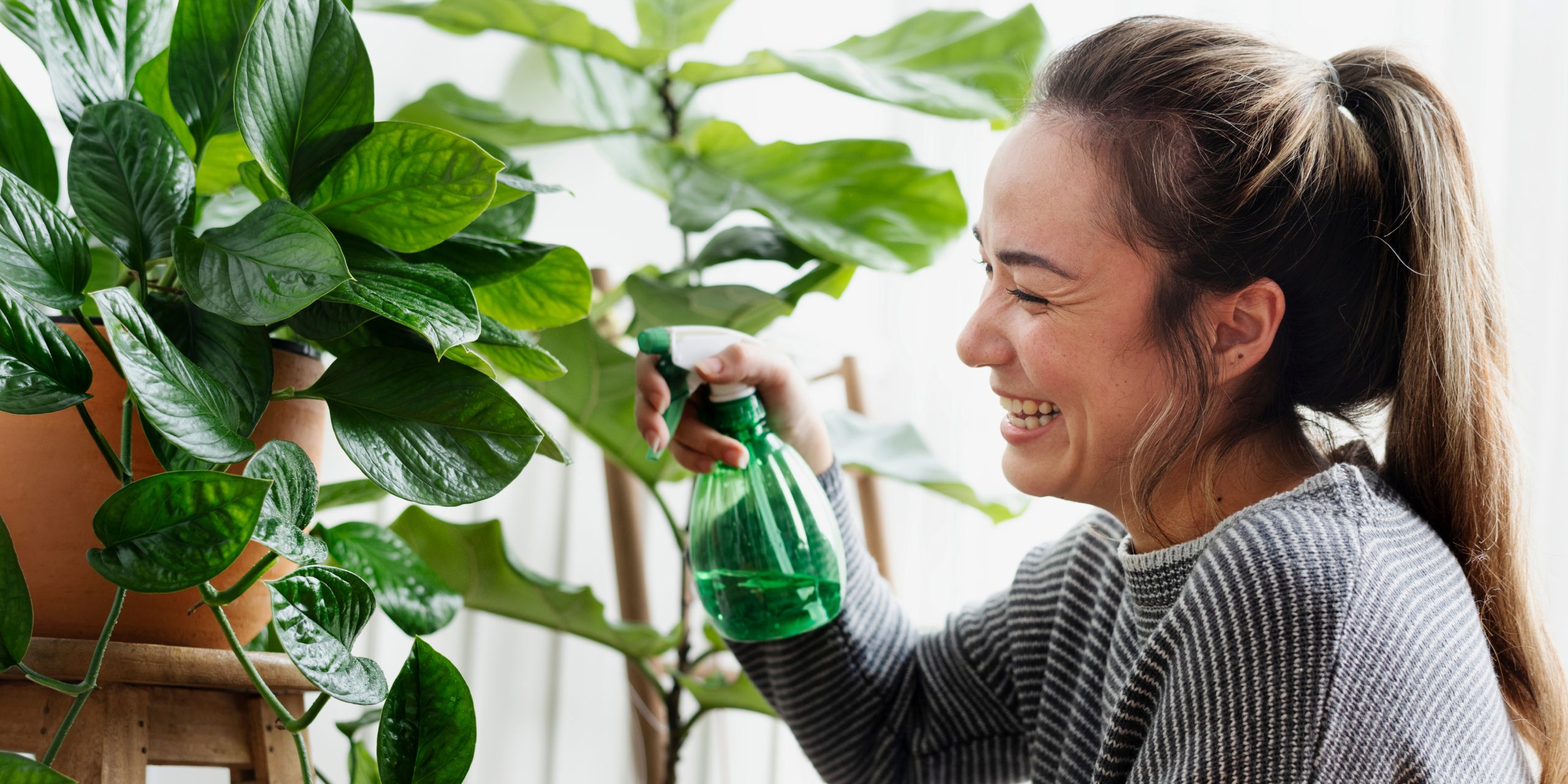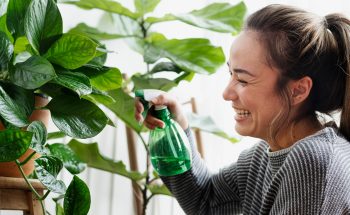Houseplants: Your Guide to 9 Popular Indoor Plants
If you’ve thought about incorporating plants into your home, but hesitated because you feel you lack a green thumb, we’ve got you covered! From snake and spider plants to succulents, you’ll find a variety of plant friends here that are easy to care for and are perfect for beginners. Read on to discover the best plants to bring out the horticulturist in you.
Easy Care Houseplants For Beginners
1. Pinstripe Calathea (Calathea Ornata)
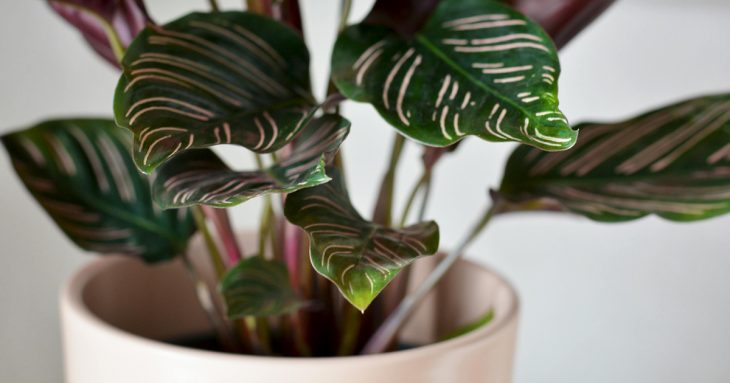
A Pinstripe Calathea plant is a beautiful and affordable addition to any home. This striking plant is native to South America and is best known for its stunning bands of color that resemble pink pinstripes. This close relative of the Maranta family, known as prayer plants, has luscious dark green leaves that close at night and then unfold during the day.
How to Care for a Pinstripe Calathea:
- Sun: Bright, Indirect Sunlight
- Water: Water every 2-4 weeks in the Summer and Every 1-2 Weeks in the Winter
- Climate: Thrives in Humid Environments
- Temperature: 65-75 Degrees Fahrenheit (18-23 Degrees Celsius)
Are Pinstripe Calatheas Safe for Pets?
For pet owners, the Pinstripe Calathea is not toxic to dogs or cats, making this a great addition to a pet-friendly home.
2. Fiddle Leaf Fig (Ficus Lyrata)
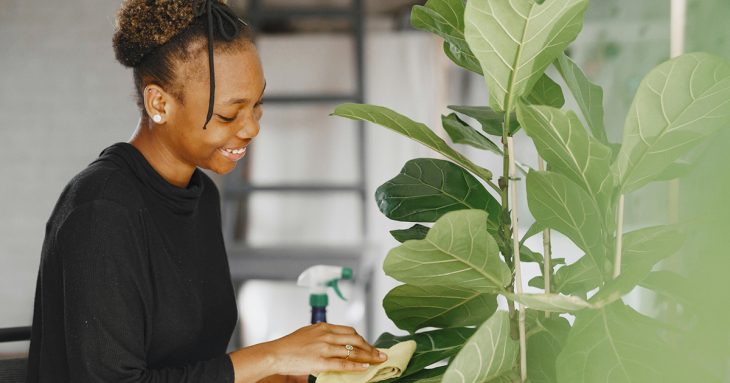
The fiddle leaf fig tree, named for its large fiddle-shaped leaves, is native to West Africa and can grow to an impressive 10 feet tall. Although a mature plant can be a little expensive, it’s worth the price as this popular plant will add organic beauty to any room in your home.
How to Care for a Fiddle Leaf Fig:
- Sun: Lots of Bright, Indirect Sunlight
- Water: Every 7-10 Days
- Climate: Thrives in High Humidity, but Can Adapt in Normal Humidity Levels
- Temperature: 60-75 Degrees Fahrenheit (15-24 Degrees Celsius)
Are Fiddle Leaf Figs Safe for Pets?
While a beautiful houseplant, the fiddle leaf fig is toxic to cats and dogs because it contains insoluble calcium oxalates, so pet owners should exercise caution before introducing a fiddle leaf to the home.
3. Chinese Money (Pilea Peperomioides)
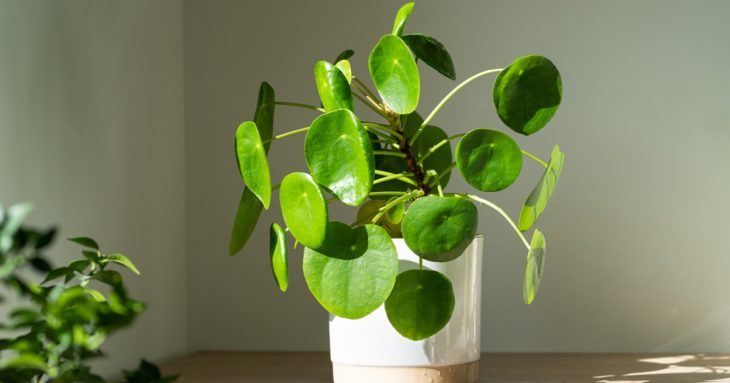
The Chinese money plant, also known as the pancake or coin plant, is an ideal houseplant for the enthusiastic beginner who wants to cultivate their green thumb. Native to China, as its name suggests, this round-leafed succulent easily propagates and produces baby Pilea Peperomioides that you can repot and share with a friend.
How to Care for a Chinese Money Plant:
- Sun: Medium to Bright, Indirect Sunlight
- Water: About Once a Week, but Check to See if the Soil Is Dry Before Watering
- Climate: Thrives in Humid Environments
- Temperature: 55-86 Degrees Fahrenheit (13-30 Degrees Celsius)
Are Chinese Money Plants Safe for Pets?
Good news for pet owners: The Chinese money plant is not toxic to dogs or cats, but it’s always good to prevent your pets from ingesting a large quantity as it can lead to stomach problems.
4. Monstera (Monstera Deliciosa)
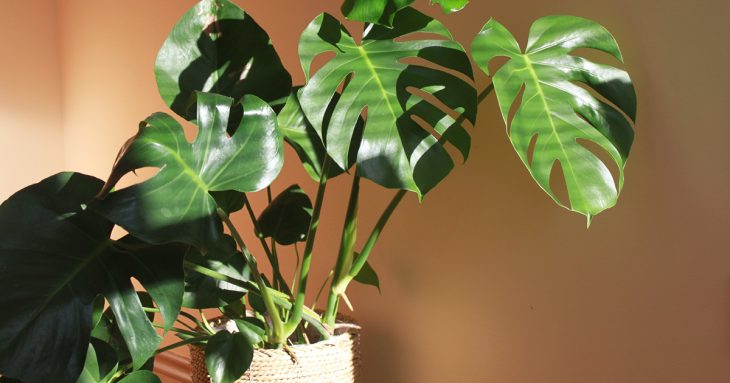
Monstera Deliciosa, also known as the Swiss cheese plant (due to its natural leaf holes), originates in tropical forests between Southern Mexico and Columbia. One of the trendiest houseplants and known for its beautiful, broad leaves, the Monstera is relatively easy to care for and is an excellent choice for beginners.
How to Care for a Monstera:
- Sun: Medium to Bright, Indirect Sunlight
- Water: Every 1-2 Weeks (Allow Soil to Dry Out Between Waterings)
- Climate: Average to High Humidity
- Temperature: 65-80 Degrees Fahrenheit (18-27 Degrees Celsius)
Are Monsteras Safe for Pets?
The Monstera or Swiss Cheese Plant is toxic to cats and dogs because it contains insoluble calcium oxalates, so pet owners should beware.
5. Rubber Plant (Ficus Elastica)
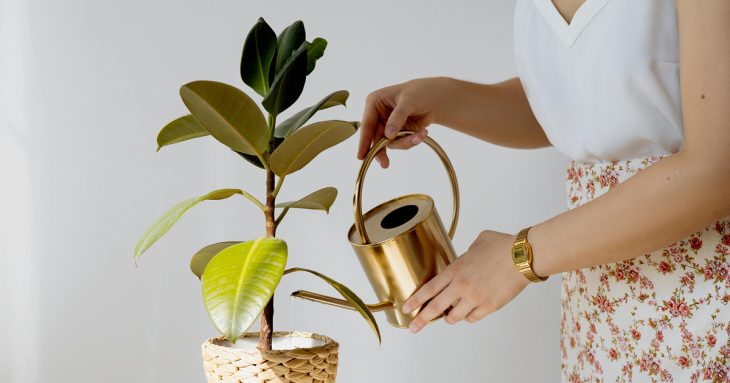
The rubber plant, or the Indian rubber tree, is easy to care for and makes an excellent houseplant. It can grow up to 10 feet indoors and 100 feet outdoors in its native Southeast Asian regions. Starting with a young rubber tree plant is best as it will adapt to being an indoor plant easier, and it is much more affordable than buying a mature plant.
How to Care for a Rubber Plant:
- Sun: Bright, Indirect Sunlight
- Water: Water When Soil Is Slightly Dry – in the Summer, About Once a Week and in the Winter, Every 2-3 Weeks
- Climate: Thrives in Humid Environments
- Temperature: 65-75 Degrees Fahrenheit (18-23 Degrees Celsius)
Are Rubber Plants Safe for Pets?
The Indian rubber plant is considered toxic to dogs and to cats because of the Proteolytic enzyme (ficin) and psoralen (ficusin) that are found in the sap of the plant.
6. Succulents and Cacti (Varied Names)
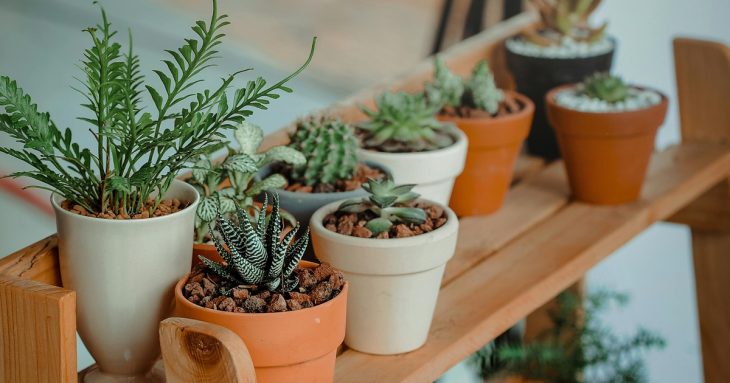
Succulents and cacti need little introduction – they’re one of the most common houseplants known for their variety of shapes, sizes and colors as well as their ability to grow in high temperatures and frequent sunlight with little moisture. Many varieties are low cost and easy to find at your local nursery or home-improvement store.
How to Care for Succulents and Cacti:
- Sun: Bright, Indirect Light to Full Sun
- Water: Varies, but a Good Rule of Thumb Is When the Soil Is 100% Dry
- Climate: Dry to Normal Humidity
- Temperature: Ranges from 60-90 Degrees Fahrenheit (15-32 Degrees Celsius)
Are Succulents and Cacti Safe for Pets?
While some varieties of succulents and cacti are safe for dogs and cats like the Blue Echeveria and Haworthia, others like the Jade Plant are not, so it’s best to consult a vet or research the particular species of plant on the ASPCA website.
7. Snake Plant (Sansevieria Trifasciata)
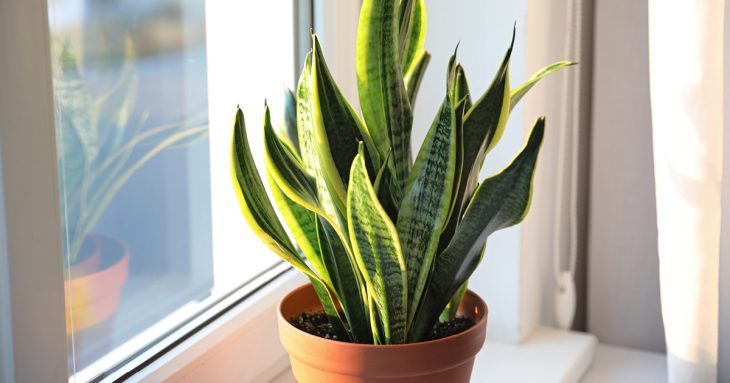
The hardy snake plant adds lovely greenery to living spaces that just about anyone can grow at home. Also called the mother-in-law’s tongue, this Western African plantonly suffers when it is overwatered or in prolonged cold temperatures. Plus, studies show the snake plant can help purify the air in your home.
How to Care for a Snake Plant:
- Sun: Shade to Partial Sun
- Water: Water if the Soil Feels Dry – in the Summer, About Every 2 Weeks, and in the Winter, About Every 2 Months
- Climate: Dry to Average Humidity
- Temperature: 70-90 Degrees Fahrenheit (21-32 Degrees Celsius)
Are Snake Plants Safe for Pets?
Unfortunately, snake plants are toxic to dogs and to cats due to toxic compounds called saponins in the leaves.
8. Bird of Paradise (Strelitzia Nicolai)
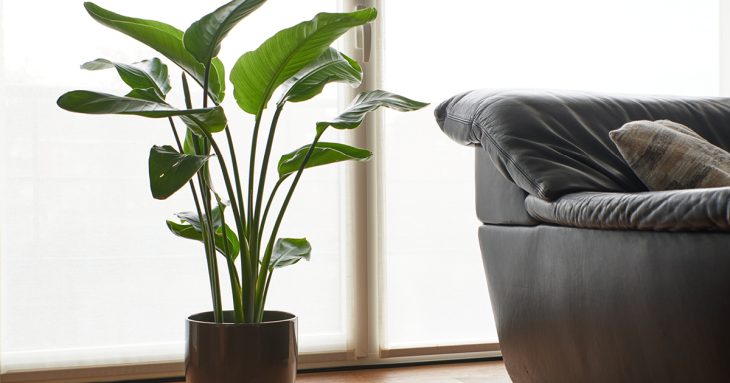
Bird of paradise plants range from three to eight feet tall indoors, have beautiful, banana-like leaves and can bloom flowers when fully mature (typically when grown outdoors). Originating from South Africa, the giant white bird of paradise looks great in any living space and is relatively easy to care for if you pay close attention to their condition.
How to Care for a Bird of Paradise:
- Sun: Bright, Indirect Light With Some Direct Sun
- Water: Allow the Top Inch of the Soil to Dry in Between Waterings
- Climate: Prefers Humid Environments
- Temperature: 70-90 Degrees Fahrenheit (21-32 Degrees Celsius)
Are Bird of Paradise Plants Safe for Pets?
Birds of paradise plants are not safe for cats and dogs and can cause mild nausea, vomiting and drowsiness.
9. Spider Plant (Chlorophytum Comosum Vittatum)
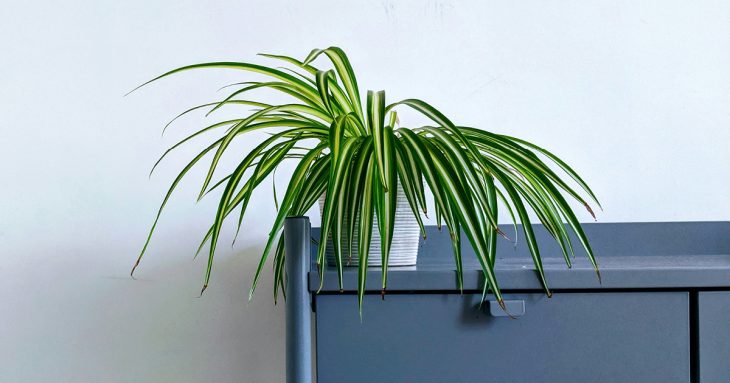
The spider plant, originating from South Africa, makes for a great hanging plant and a perfect addition to a beginner’s houseplant collection. It requires minimal attention, is a low-cost option and can grow in a range of temperatures.
How to Care for Spider Plants:
- Sun: Prefers Bright, Indirect Light but Can Adapt in Several Conditions
- Water: Every 10-14 Days – Allow the Top Inch of Soil to Dry in Between Waterings
- Climate: Thrives in Humid Environments
- Temperature: 60-90 Degrees Fahrenheit (15-32 Degrees Celsius)
Are Spider Plants Safe for Pets?
Thankfully, spider plants are considered non-toxic to dogs and to cats. But as always, remember that even non-toxic plants can cause an upset stomach if ingested in large quantities!
Give Your Houseplants a Home
If you find your indoor plant collection outgrowing your current space or desire to plant roots in a home of your own, we can help.
Premier Mortgage Associates offers a wide range of home financing products designed with your lifestyle and budget in mind. You can trust our highly experienced team of mortgage professionals to work with you to select the PMA loan product that best suits your unique financial needs.
Get started on your homeownership goals today by getting preapproved with one of our friendly, experienced Loan Officers.
Get Preapproved Today
Our easy preapproval process gives you the preliminary answers you need to qualify, so you can borrow the maximum amount you need to purchase your dream home.
Sign Up With Us
Get important updates on our competitive mortgage rates, industry news, and other information to help you along in your homebuying journey.
NQM Funding, LLC (NMLS # 75597) dba - Premier Mortgage Associates; Villa Home Loans;Texas: Consumers wishing to file a complaint against a mortgage company or a licensed residential mortgage loan originator should complete and send a complaint form to the Texas department of savings and mortgage lending, 2601 North Lamar, Suite 201, Austin, Texas 78705. Complaint forms and instructions may be obtained from the department’s website at www.sml.texas.gov. A toll-free consumer hotline is available at 1-877-276-5550. The department maintains a recovery fund to make payments of certain actual out-of-pocket damages sustained by borrowers caused by acts of licensed residential mortgage loan originators. A written application for reimbursement from the recovery fund must be filed with and investigated by the department prior to the payment of a claim. For more information about the recovery fund, please consult the department’s website at www.sml.texas.gov | www.nmlsconsumeraccess.org
